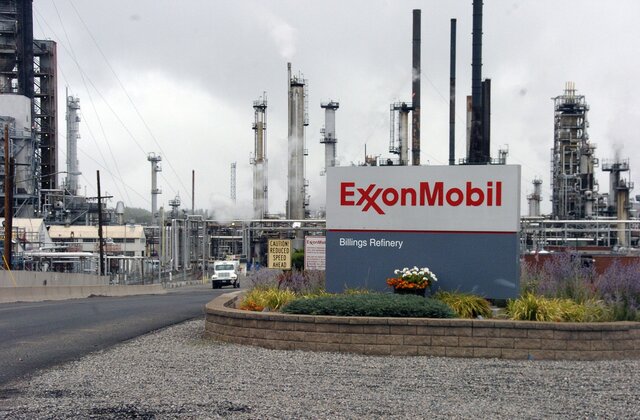Is Exxon Stock a Smart Investment? Analyzing Trends and Future Prospects for 2025

As the energy landscape continues to evolve, many investors are eyeing Exxon stock with a mix of curiosity and caution. The company, a longstanding giant in the oil and gas sector, faces not only the challenges of fluctuating crude prices but also the increasing pressure to align with sustainable practices. With projections for 2025 suggesting an undeniable shift in energy demands and regulatory dynamics, understanding Exxon’s position is more crucial than ever. Will Exxon capitalize on emerging opportunities, or will it struggle amid rising competition from renewable energy sources?
This article delves into the latest trends shaping Exxon’s future, evaluating its financial health, market performance, and strategic initiatives. Join us as we navigate through the complexities of investment decisions and help you determine if Exxon stock is a smart choice for 2025 and beyond.
Overview of ExxonMobil’s Business Model
ExxonMobil (NYSE: XOM) operates as an integrated energy giant, spanning upstream exploration, downstream refining, and chemical manufacturing. Its business model balances traditional oil and gas operations with strategic investments in low-carbon technologies like carbon capture and hydrogen. The company’s upstream dominance in high-margin assets—such as the Permian Basin and Guyana offshore fields—fuels its profitability, while its downstream and chemical segments provide stability during oil price volatility. Recent acquisitions, like Pioneer Natural Resources, expanded its Permian footprint to 1.4 million acres, targeting 2.3 million barrels of daily production by 2030. This integrated approach positions ExxonMobil to leverage scale, cost efficiency, and diversification across energy markets.
Historical Performance of Exxon Stock
ExxonMobil’s stock has shown resilience amid industry turbulence. From 2020’s pandemic lows ($25.03), shares rebounded to $126.34 by 2024, driven by soaring oil prices and disciplined capital allocation. However, 2025 brought challenges: geopolitical tensions and renewable energy pressures pushed shares to $111.32 (May 2025), down 15.3% from 2024 peaks. Historically, XOM’s performance correlates closely with Brent crude prices (96.86% revenue linkage)。 Dividends remain a hallmark, with 55 consecutive years of payout growth and $36 billion returned to shareholders in 2024 via buybacks and dividends. Despite cyclical swings, Exxon’s low debt-to-equity ratio (14.6%) and $55 billion free cash flow underscore financial durability.
Current Market Trends Affecting Exxon Stock
Three trends dominate ExxonMobil’s 2025 outlook:
1. Oil Price Volatility: WTI crude fluctuates near $73.47/barrel, pressured by weak Chinese demand and OPEC+ supply dynamics.
2. Energy Transition Pressures: Global decarbonization mandates push Exxon to invest $20 billion in low-carbon projects by 2030, including carbon capture and biofuels.
3. Geopolitical Risks: U.S.-China trade tensions and EU tariff hikes (31% on energy imports) threaten supply chain stability and export margins.
While traditional energy demand persists, Exxon’s pivot to Guyana and Permian production—forecasted to deliver $30 billion cash flow growth by 2030—offsets near-term headwinds.
Financial Health and Key Metrics of ExxonMobil
Exxon’s Q1 2025 financials highlight strengths and risks:
Revenue: $440.2 billion (TTM), supported by record Permian/Guyana output.
Profitability: Net income of $33.7 billion (2024), though Q1 2025 EPS dipped 15% YoY.
Balance Sheet: $23 billion cash reserves, $39.5 billion debt, and debt-to-equity of 14.6%—well below industry averages.
Shareholder Returns: $20 billion annual buybacks (2025–2026) and a 3.49% dividend yield anchor investor confidence.
However, rising liabilities ($182.9 billion) and margin pressures from low-carbon investments warrant caution.
Industry Analysis: Oil and Gas Sector Outlook
The oil and gas sector faces a bifurcated future. Global energy demand is projected to grow 1.2% annually through 2030, driven by emerging markets. Yet, renewables like solar and wind are expanding at 5% yearly, pressuring fossil fuel dominance. ExxonMobil’s focus on low-cost, high-margin assets (e.g., Guyana’s $9/barrel production costs) positions it competitively against peers like Chevron and Shell. Meanwhile, petrochemical demand for plastics and LNG offers growth avenues, though trade wars and emission regulations could disrupt supply chains.
Environmental, Social, and Governance (ESG) Considerations
ExxonMobil’s ESG profile is mixed. Critics highlight its lagging emissions targets and 2023 lawsuit against climate-focused shareholders. However, its $20 billion low-carbon budget and methane reduction initiatives align with broader industry shifts. Governance risks persist: activist investors, holding just 0.02% shares, secured board seats in 2021, forcing strategic concessions. While Exxon’s carbon capture projects show promise, stakeholders demand faster adoption of renewables to mitigate long-term reputational and regulatory risks.
Expert Opinions and Analyst Ratings
Analysts are divided on XOM:
Bulls: Cite undervaluation (P/E of 6.34 vs. industry 12) and Guyana/Permian growth potential. Citigroup forecasts a $130.50 price target (17% upside)。
Bears: Highlight oil price sensitivity and ESG liabilities. Mizuho downgraded XOM to “Neutral,” citing margin compression from renewable investments.
Consensus leans toward a “Hold,” with a median 12-month target of $114.00, reflecting cautious optimism amid transition uncertainties.
Investment Risks and Considerations
Key risks for ExxonMobil investors include:
1. Oil Price Swings: A 10% drop in Brent crude could slash annual cash flow by $4 billion.
2. ESG Pressures: Stricter emissions rules or shareholder activism may inflate compliance costs.
3. Execution Risks: Delays in Guyana/Permian projects or low-carbon tech could derail growth targets.
4. Geopolitics: Trade wars and sanctions, particularly in China and the EU, threaten export revenues.
Diversification into stable dividends and buybacks mitigates some volatility, but sector-wide disruptions remain a concern.
Conclusion: Is Exxon Stock Worth Investing In?
ExxonMobil offers a compelling mix of income stability and strategic growth, but timing is critical. The stock’s current valuation (6.64x EV/EBITDA) reflects premium confidence in its Permian/Guyana expansion and $20 billion buyback program. Income investors will appreciate its robust dividend history, while long-term holders can bet on its low-carbon transition. However, oil price dependency and ESG hurdles demand a risk-tolerant portfolio. For 2025, XOM suits contrarian investors banking on energy sector resilience, but those seeking rapid renewables exposure should look elsewhere.